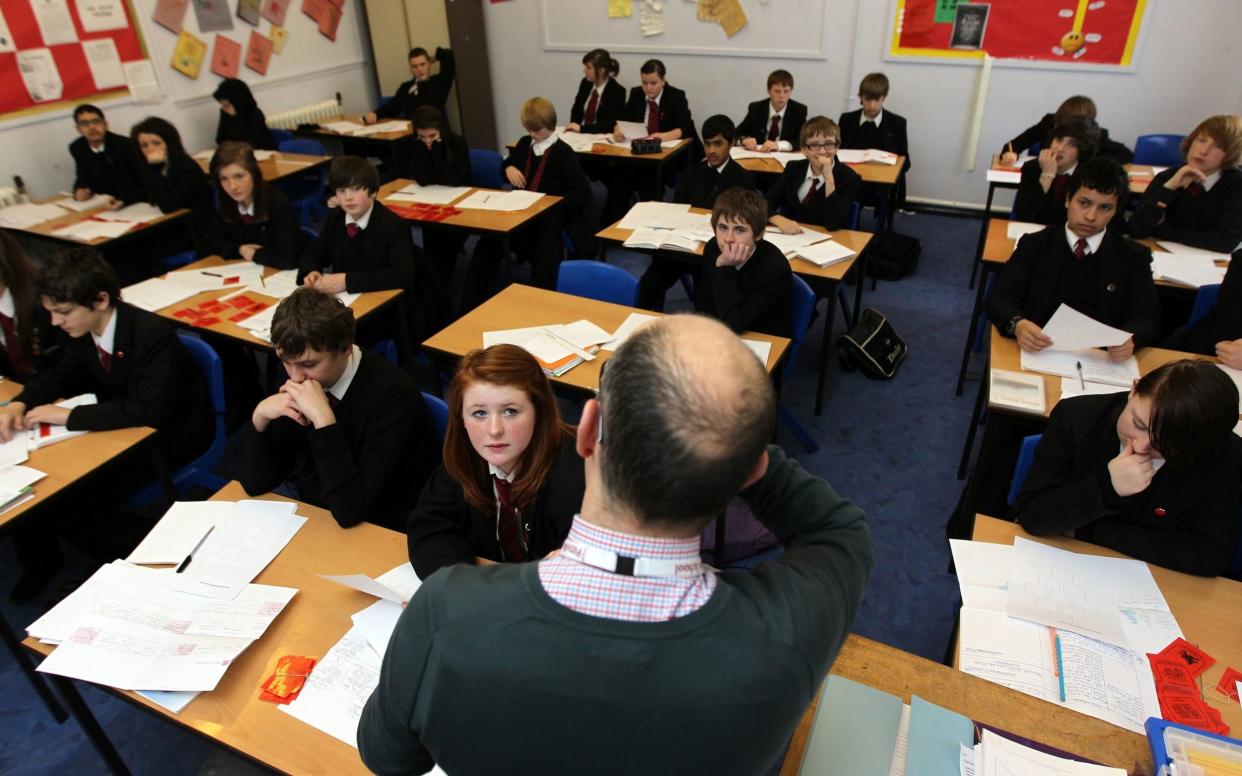Pupils lose out as number of male teachers falls to new low as white men abandon profession

Male teachers now make up just a third of the workforce in secondary schools after a steep decline in the numbers of white men choosing the profession, new figures have revealed.
The proportion of men teaching 11 to 16-year-olds has fallen year-on-year over the last decade, hitting its lowest level last year when numbers dropped to 35.5pc, according to an analysis by the Education Policy Institute (EPI) think tank.
Experts say the decline could be the result of a perception more commonly held by men that teaching is a lower status job, while other career paths offer more earning potential.
The study also found that despite the workforce becoming more female-dominated, the proportion of black and minority ethnic (BME) male teachers has risen to 17pc - which, for the first time, is broadly representative of the wider population.
Since 2010, the number of BME male teachers has increased in both primary schools - by 114pc - and secondary schools - by 34pc.
Meanwhile, the number of white men in secondary schools has fallen by more than 12,800 since 2010 - a fall of 17pc, the analysis has found.
“This is an important consideration in areas where there is a prevalence of underperforming white working-class boys,” the report said.
Both trends may have implications for pupil outcomes, the report said, as there is evidence that pupils have higher learning outcomes when they have "a teacher like me" in the classroom.
Joshua Fullard, author and senior researcher at the EPI, said: "Evidence suggests that when a teacher matches the background of their pupils, this can help to improve pupil outcomes.
"It's therefore encouraging that despite the overall decline in males, we have seen a rise in the proportion of BME male teachers, which now corresponds with the population as a whole."
The proportion of men teaching in secondary schools has fallen year-on-year since 2010, hitting its lowest level last year when 35.5pc of teachers were male, the analysis shows.
But figures in primary schools have stagnated over the last five years to 14.1pc.
The decline of male teachers has occurred in every region in England, except for inner London.
Men are least likely to go into teaching in the North East, where across all schools, just one in four (24.4pc) teachers are male, according to the report.
It suggests that the decline of men in the profession is likely to be caused by the public sector pay freeze over the last decade.
The think tank says the Government is likely to need to recruit more men in shortage subjects, like maths and physics, to meet recruitment targets, and it should continue to offer top-up payments to help recruit and retain maths and physics teachers in the most disadvantaged areas.
Dr Stephen Curran, a teacher and former government adviser, said there is still an attitude amongst some men that they can earn more money outside of teaching.
He said: “We still have a gender imbalance in this country. There’s been quite a lot of work to correct it, but the perception still is among men that they can earn a higher salary outside of teaching than in it…Men that I’ve talked to say ‘I can earn far more as an accountant in the City’. That kind of attitude amongst professional educated men persists.”
Professor Lee Elliot Major, professor of social mobility at Exeter University, said the declining popularity of teaching could be because it is seen as a low status job among men.
He said: “Sadly, the teaching profession suffers from low pay, low social status and stereotypes that it’s female work – all of which drive the underrepresentation of males.
“We need to give greater value and respect to one of the most important jobs in society so we attract good people irrespective of their gender.”
A Department for Education (DfE) spokeswoman said: "We are working to increase the diversity of the teaching workforce, and have improved pathways into the profession with the aim of a diverse workforce that supports the progression and retention of all teachers, regardless of gender."

 Yahoo News
Yahoo News 
